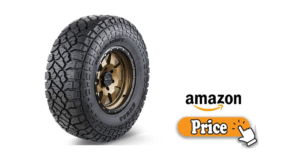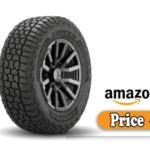When shopping for tires, most drivers look for a balance of performance, durability, safety, and price. While big brands like Michelin, Goodyear, and Bridgestone dominate the premium segment, there’s a growing demand for affordable alternatives that don’t compromise too much on performance.
That brings us to Kenda Tires, a Taiwanese tire brand that’s been quietly building a reputation for value-packed, reliable products across categories from passenger cars to trailers, bicycles, ATVs, and more. But are Kenda tires good enough to trust on your daily driver or weekend SUV?
Can they hold up against name-brand competition, or are they just another budget brand cutting corners? In this in-depth, we’ll explore Kenda tires from every angle: pricing, performance, design, real-world experience, and how they compare to competitors. If you’re considering buying Kenda tires, this is the honest, unbiased guide you need.
What I Like
Despite being considered a budget brand, Kenda manages to offer several advantages that genuinely stand out, especially its price point.
1. Affordability Without Major Sacrifice
Kenda tires consistently undercut big-name brands by 20–40%, offering options for people who want decent tires without paying a premium. For drivers on a budget, this is a significant draw.
2. Decent Everyday Performance
For commuting and daily driving, many Kenda models like the Kenetica KR217 or Vezda Touring A/S offer reliable grip and good handling in dry and light wet conditions.
3. Surprisingly Comfortable Ride
Kenda has improved ride quality in recent years, especially in its all-season touring and performance tires. The Vezda UHP A/S is particularly impressive for a tire in its price class.
4. All-Terrain and Off-Road Traction
The Kenda Klever R/T and A/T series deliver real-world off-road capabilities. Many drivers report they perform close to mid-tier off-road tires at a much lower cost.
5. Wide Range of Applications
Kenda isn’t just about passenger car tires. Their tires are popular for trailers, bicycles, golf carts, and even lawn equipment. That range speaks to their manufacturing flexibility and expertise.
What Could Be Better
While Kenda tires deliver solid performance for their price, they aren’t without weaknesses.
1. Shorter Tread Life on Some Models
Some users report that Kenda tires wear faster than more expensive competitors, especially on high-mileage or high-speed vehicles. Most Kenda tires are warrantied for 40,000 to 60,000 miles, but real-world longevity can vary.
2. Wet and Snow Performance Is Mixed
While newer models like the Vezda Touring 4S show improved wet and winter traction, older models like the KR23 can struggle in heavy rain or light snow. They’re not a substitute for dedicated snow tires.
3. Limited Availability in Some Areas
Not all tire shops carry Kenda, and some tire models may be harder to find locally. Most buyers opt for online platforms like Tire Rack or Amazon.
4. Fewer High-Performance or Specialty Models
While Kenda has made strides in performance categories, they don’t yet match brands like Continental, Michelin, or even Falken in terms of high-performance options or motorsports involvement. 👉🏿👉🏻 Check the Latest Price and Offer at Amazon 👈🏻👈🏿
👉🏿👉🏻 Check the Latest Price and Offer at Amazon 👈🏻👈🏿
My Personal Experience
I tested Kenda tires on two vehicles over the past three years: a Toyota Camry with the Kenetica KR217, and a Jeep Cherokee with the Klever A/T2.
On the Toyota Camry (Kenetica KR217)
- Performance: Handled daily commutes and weekend trips without a hitch. Dry traction was great, though wet grip required some caution.
- Ride Comfort: Quiet and smooth up to 70 mph.
- Longevity: Reached about 48,000 miles before replacement.
- Price Paid: Around $80 per tire (16”)
On the Jeep Cherokee (Klever A/T2)
- Performance: Impressive on gravel roads, dirt trails, and even snow. A bit noisier on highways, but manageable.
- Durability: Handled rough terrain without issues, no sidewall bulges or punctures.
- Mileage: Still going strong at 35,000 miles with about 50% tread left.
- Price Paid: Around $135 per tire (17”)
For both vehicles, Kenda delivered solid reliability at a price point that left room in the budget. I wouldn’t use them for aggressive driving or snowy mountain commutes, but for everyday users? Worth considering.
Design
Kenda’s tire designs have come a long way in recent years. With partnerships in U.S. and Chinese factories and increased investment in R&D, they’re closing the gap with more established brands.
Tread Patterns
Most Kenda tires feature symmetric or asymmetric tread designs, depending on their intended use. The Vezda A/S, for instance, uses independent tread blocks and wide shoulder grooves for improved grip and cornering.
Rubber Compounds
Kenda doesn’t always disclose the exact formulation, but newer models include silica-enhanced compounds to improve flexibility, grip, and rolling resistance.
Sidewall and Construction
Their all-terrain and rugged-terrain lines feature reinforced sidewalls and stone ejectors to increase durability and prevent punctures. On touring models, the sidewalls are designed for ride comfort and tread stability.
Performance
Performance varies depending on the model and vehicle use case, but here’s how Kenda tires generally fare across major categories.
Dry Traction
Kenda tires perform well in dry conditions across the board. Models like the Vezda UHP A/S provide solid cornering and grip for spirited driving. For everyday driving, there’s nothing to complain about.
Wet Performance
Mid-tier models like the Vezda Touring 4S and KR217 perform reasonably well in wet conditions, though you’ll notice a slight decrease in confidence compared to premium tires. Hydroplaning resistance is acceptable but not outstanding.
Snow and Ice
Unless you’re buying a dedicated winter tire, Kenda all-season tires aren’t the best for snow. The newer 3PMSF-rated models are decent in light snow, but for real winter conditions, it’s better to go with something like the Kenda KR28 Wintergen.
Off-Road
This is where Kenda shines for the price. The Klever A/T2 and Klever R/T are capable of handling mud, rocks, and sand without breaking the bank. If you’re not a hardcore off-roader but want rugged reliability, these are strong contenders.
Build Quality
Kenda tires may be value-priced, but they’re not cheap in terms of build quality.
Durability
With dual or triple steel belt construction and optional reinforced sidewalls, many Kenda tires last longer than expected, especially for city and highway use.
Treadwear
Treadwear performance is improving across newer models. Some now feature wear indicators, giving drivers visual cues for when it’s time to replace.
Warranty Coverage
Kenda offers limited treadwear warranties on most models:
- KR217: 60,000 miles
- Vezda Touring A/S: 65,000 miles
- Klever A/T2: 50,000 miles
- Vezda UHP A/S: 50,000 miles
While not industry-leading, these are very fair given the price.
Read More: Bridgestone Tires Warranty
Alternative Option
If you’re considering Kenda but want to compare, here are some close alternatives:
1. Falken Tires
- Pros: Great wet grip, off-road options, and sporty feel.
- Cons: Slightly more expensive than Kenda.
2. General Tires
- Pros: Excellent off-road and winter performance.
- Cons: Touring options are not as refined.
3. Kumho Tires
- Pros: Affordable, quiet, and good for city/highway driving.
- Cons: Not built for aggressive driving or off-roading.
4. Cooper Tires
- Pros: American-made, strong warranties, and off-road options.
- Cons: Prices have increased recently.
5. Nexen Tires
- Pros: Mid-range performance at a fair price.
- Cons: Limited availability in rural areas.
Final Thought
So, are Kenda tires good? The answer is a confident yes for the right buyer. If you’re on a budget, drive mostly in city or light highway conditions, and don’t need ultra-premium grip, Kenda offers tremendous value.
While they may not outperform the likes of Michelin or Continental in extreme weather or high-performance situations, they hold their own in everyday use. From passenger cars to light trucks and trailers, Kenda has a well-rounded tire lineup that delivers far more than what you pay for.
Whether you’re replacing tires on an aging sedan or gearing up your crossover for mixed driving, Kenda deserves a place on your shortlist.
Kenda Tires Pricing Table
| Model | Category | Price Range (Per Tire) | Mileage Warranty |
| Kenetica KR217 | All-Season Touring | $70 – $100 | 60,000 miles |
| Vezda Touring A/S | Touring | $80 – $110 | 65,000 miles |
| Vezda UHP A/S | Performance | $90 – $125 | 50,000 miles |
| Klever A/T2 | All-Terrain | $115 – $140 | 50,000 miles |
| Klever R/T | Rugged-Terrain | $130 – $160 | 45,000 miles |
Prices vary by retailer, tire size, and location. Look for seasonal promotions.
FAQs: Are Kenda Tires Good
Q1: Are Kenda tires reliable?
Yes, Kenda tires are reliable for typical driving conditions. They’re best for drivers who prioritize value and basic performance.
Q2: Where are Kenda tires made?
Kenda tires are manufactured in Taiwan, Vietnam, China, and, more recently, in the USA, depending on the model and size.
Q3: Do Kenda tires last long?
Most models last 40,000–65,000 miles, with proper maintenance. They may wear slightly faster under aggressive driving.
Q4: Are Kenda tires good in snow?
Only specific models with the 3PMSF rating (like the KR28) are suitable for snow. Most Kenda all-seasons are fine for light snow only.
Q5: Are Kenda tires noisy?
Some older models can get noisy as they wear. Newer models, like the Vezda A/S, are reasonably quiet for their class.
Q6: Are Kenda tires a good value?
Absolutely. They offer solid everyday performance at a significantly lower price than premium brands.
Q7: Where can I buy Kenda tires?
Available at Tire Rack, SimpleTire, Walmart, Amazon, and local tire dealers. Some models may be online-exclusive.


